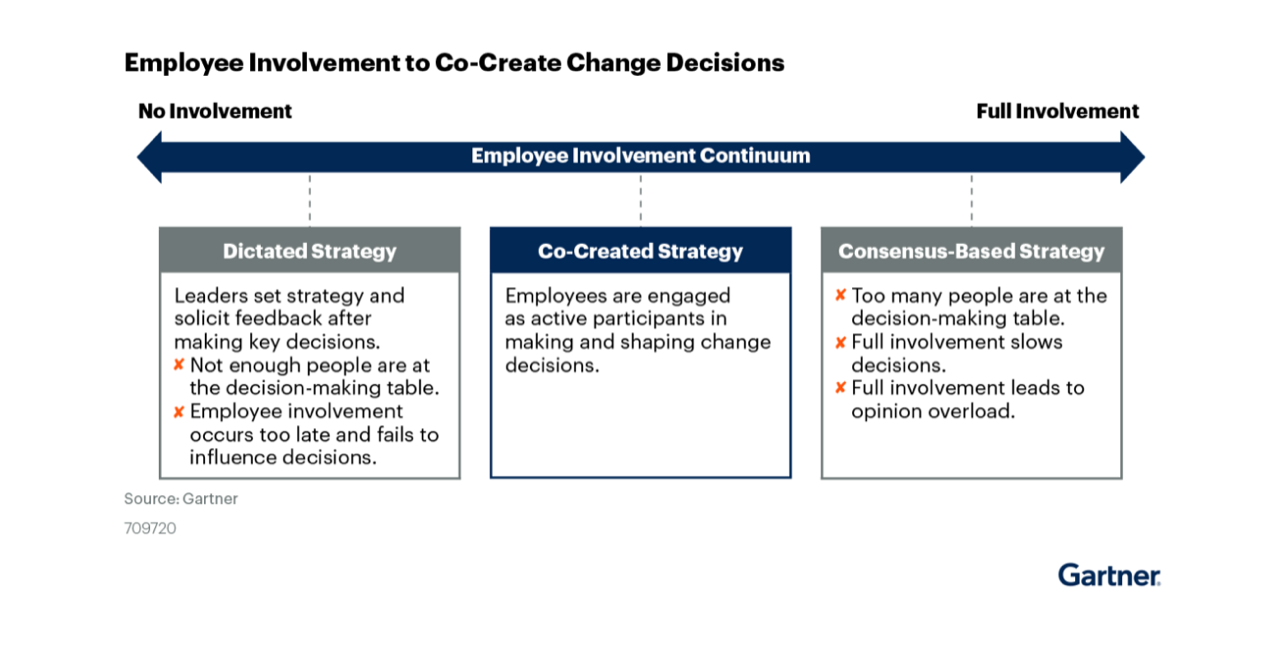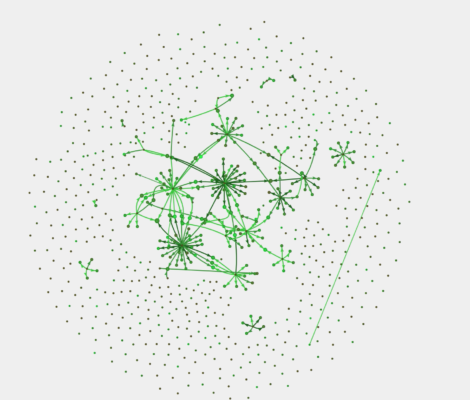The best ideas come from employees themselves. I put it this way: it is best to take employees seriously, because that ensures the most acceptance of change, the rapid identification and resolution of problems and the timely identification of opportunities. Research (by Gallup, for example) has shown for years that engagement is directly impacted by the extent to which you seriously listen to employees. Change is then better understood and embraced more quickly. Conversely, research shows that change failure is primarily due to disengagement and a lack of employee voice. So, you have to engage employees. Every day.
Request demo
But how? We do agree about sending single round surveys (the ones we all encounter so often unfortunately): it gauges the temperature, but that’s all they do. And let’s just say it out loud: no manager bases decisions on ‘often mentioned topics’ and word clouds, right?

Do you leave it to individual managers then to structurally engage their people? That is possible, but research shows that in 80% of cases, departing talent points to that manager as the reason for leaving. And only 1 out of 5 managers effectively follow up on HR’s survey reports. There is also something pinching there …. And as a CHRO, how do you make sure you genuinely activate all managers, and all employees? Measurably? That you spark a culture in which change, solving problems, accomplishing goals, and seizing opportunities are normal things? A culture of co-creation as recent research from Gartner also confirms.
In my view, this requires three things.
One network, one brain
First of all, in our companies, we are not individualists, but a living, learning network of connected individuals. We share, talk, gossip, ask, tell, app, email, lunch, consult, feel, think, organise, reflect and we desperately need that. It happens in that interaction between people. Think of people as one big brain. The collective intelligence you can acquire from approaching people as one big, connected brain and have them co-create just about anything, yields up to 60% more intelligence and creativity than the combined individual performance of individuals’ brains. People are like the neurons in your brain: only the connectedness through synapses make it a brain. Strong networks of connected employees perform up to 2x better. So, pay attention, because 52% of employees do not experience that connection. How do you intentionally increase people’s connectedness?
New leadership
Second, it requires new leadership. Do not make top-down decisions and roll them out, but address and engage the workforce in a structured manner. You gain trust and commitment by engaging them in continual dialogue, via challenging, deliberate open-ended questions and listening to employees how they collectively solve these. This way, you put the diversity of their thinking to work, of all of them in a way to respects diversity and full inclusion. Asking questions challenges them to think about the status quo, about tomorrow and next year, what to keep and what to let go of. About what is needed most and why, what obstacles can be identified and taken down, what can be done smarter, or be simplified, what must change to accomplish ABC, etc. Asking open-ended questions that matter now is the cornerstone of leadership and the heart of engagement. The brain is therefore better able to handle change and people commit themselves to the problem solving you engage them in. Simple right? Engaging people leads to engagement, not the periodical measurement of it. To engage is a verb, more than it is a noun.
One brain requires new technology
Third, it requires a different view on technology. It’s wonderful to have an online meeting with several people. However, it is necessary to involve all employees if you want to accomplish less biased and more reliable results. We need scalable dialogues and co-creation in order to unlock collective intelligence, to increase connectedness and impact people’s willingness to change. Technology can and does, with human power and a piece of AI. With a depth and impact that were previously unimaginable. Qualitative ideas, recommendations, analysis and suggestions can now be processed, given meaning, be validated and enriched in real time by humans and AI. Research and data from our customers show that in this day and age the speed of processing information determines your chance of survival and organizational development.
New listening, connecting and changing
More than 70% of organizations continue to invest heavily in employee engagement, according to Ventana Research. Our advice is to choose technology in which people as a network are central and value is added to the business. Consider even divesting old employee listening technology, such as surveys (pulse or other) that have not proven themselves in the eyes of employees and managers to deliver corporate performance and retention. Change, connectedness and retention demand you to do everything possible and develop a new view on people, leadership and technology. CEOs estimate only 1 out of 3 CHROs to be up to the task and deliver on the company’s priorities, according to Accenture.
The highest priority to rethink how engagement meets corporate performance. What do you do?
Want to talk more about it? Plan your meeting here.
Maurik Dippel, MSc, is CEO and co-founder of CircleLytics Dialogue


